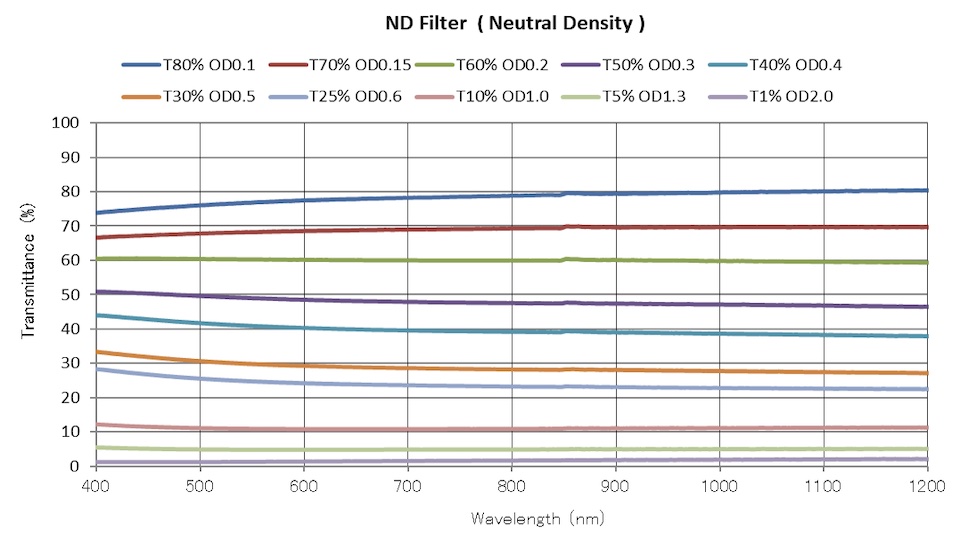ND Filter (Reflective/Absorptive)
ND filters (Neutral Density Filters) are generally called "Neutral Density Filters" and are intended to reduce the amount of light in the wavelength band used.
The amount of light attenuation is defined by optical density, and is usually called OD0 to 6 (audi 0 to 6).
There are two types of ND filters: reflective and absorptive.
The reflective type is mainly composed of a metal film, and it is necessary to consider unnecessary light reflected to the incident light side.
Since the absorption type absorbs unnecessary light into the substrate, it has the advantage of not requiring consideration for reflected light.
For this reason, the key point is the film formation conditions to ensure that the film quality does not easily change in the operating environment.
The amount of light attenuation is defined by optical density, and is usually called OD0 to 6 (audi 0 to 6).
There are two types of ND filters: reflective and absorptive.
The reflective type is mainly composed of a metal film, and it is necessary to consider unnecessary light reflected to the incident light side.
Since the absorption type absorbs unnecessary light into the substrate, it has the advantage of not requiring consideration for reflected light.
For this reason, the key point is the film formation conditions to ensure that the film quality does not easily change in the operating environment.





 Camera equipment
Camera equipment
It is mainly used for cameras. It reduces the amount of light in a well-balanced wavelength range and can be used for special photography with long exposure times because it can shoot without changing the color tone.